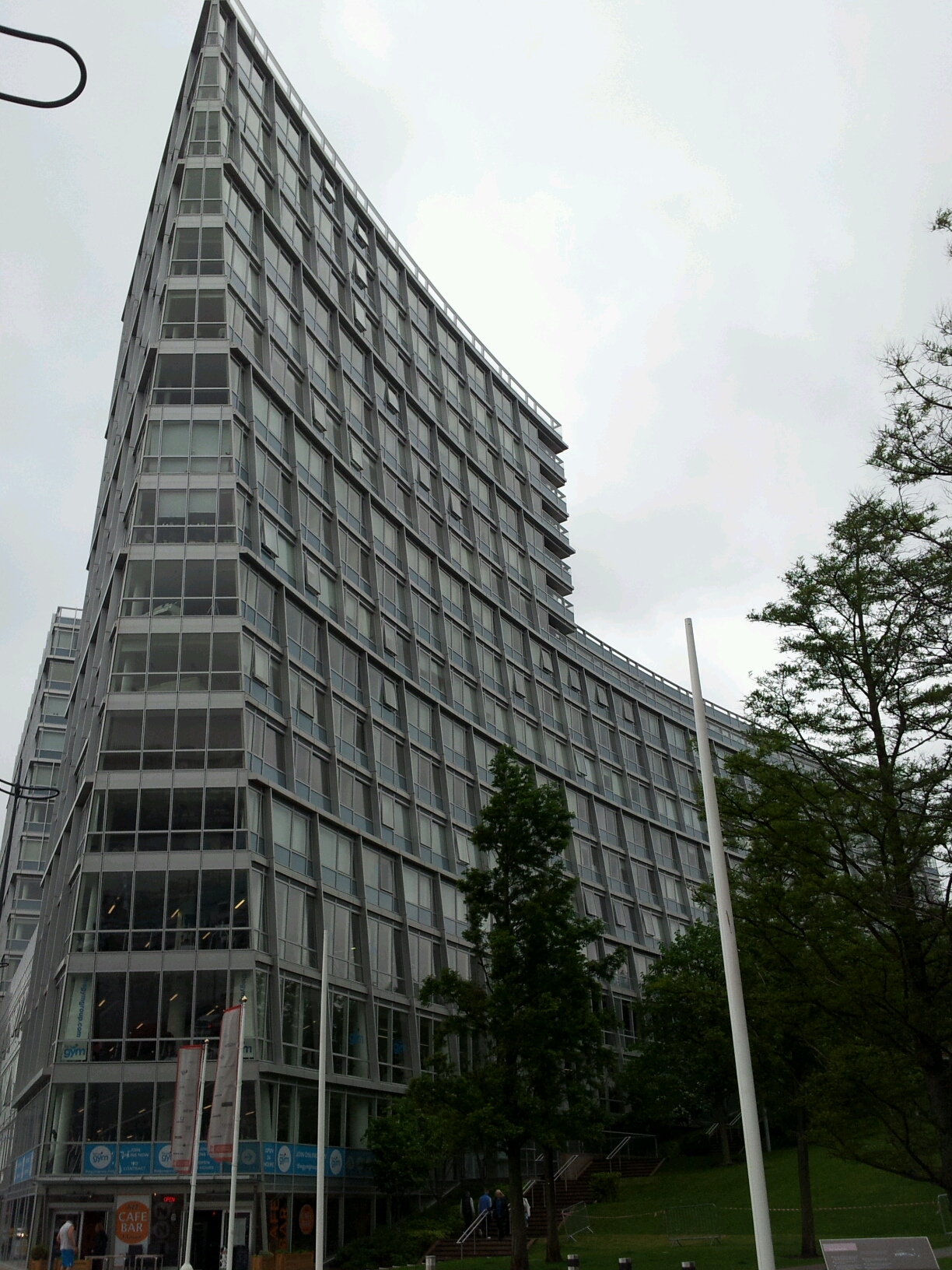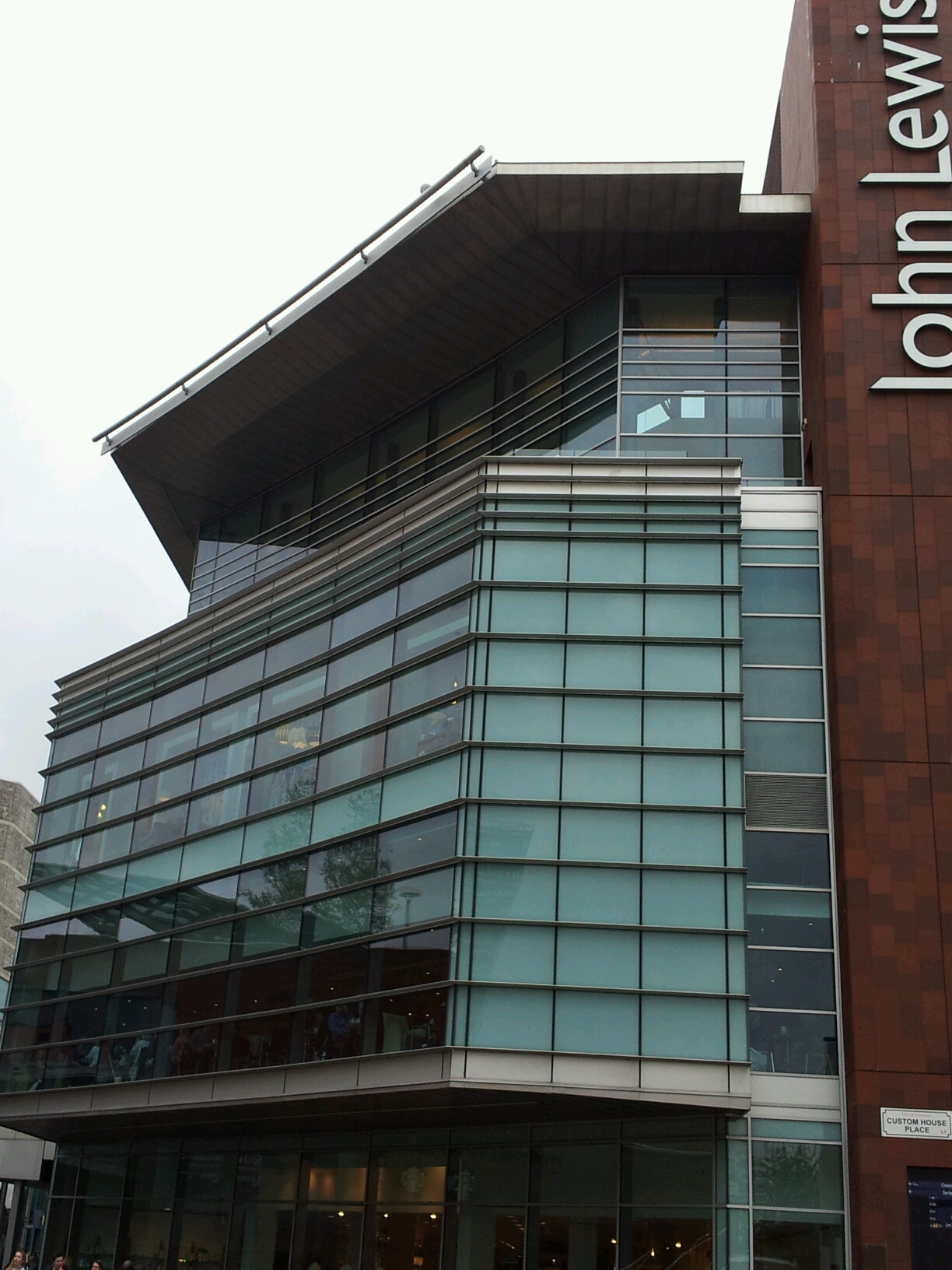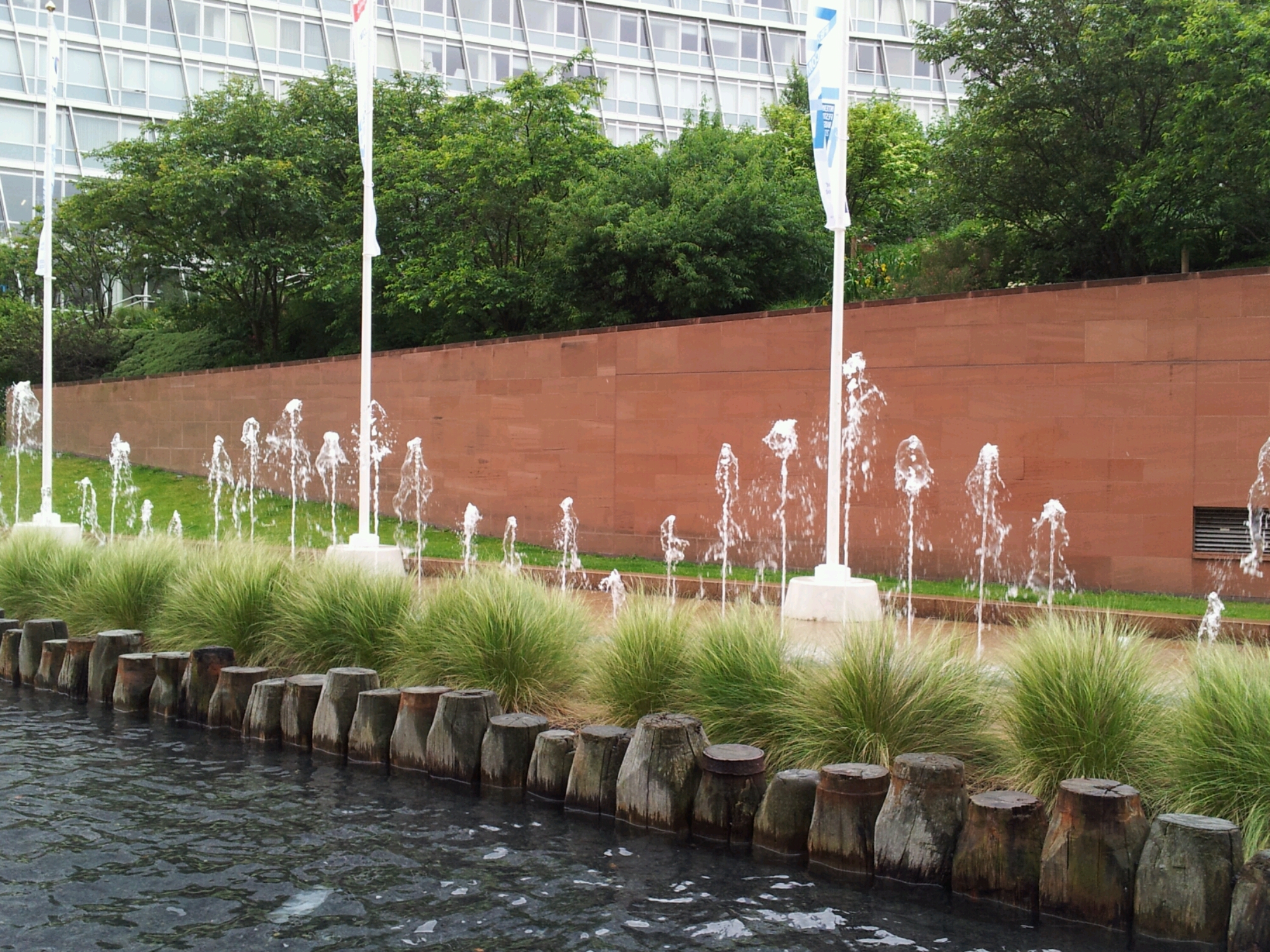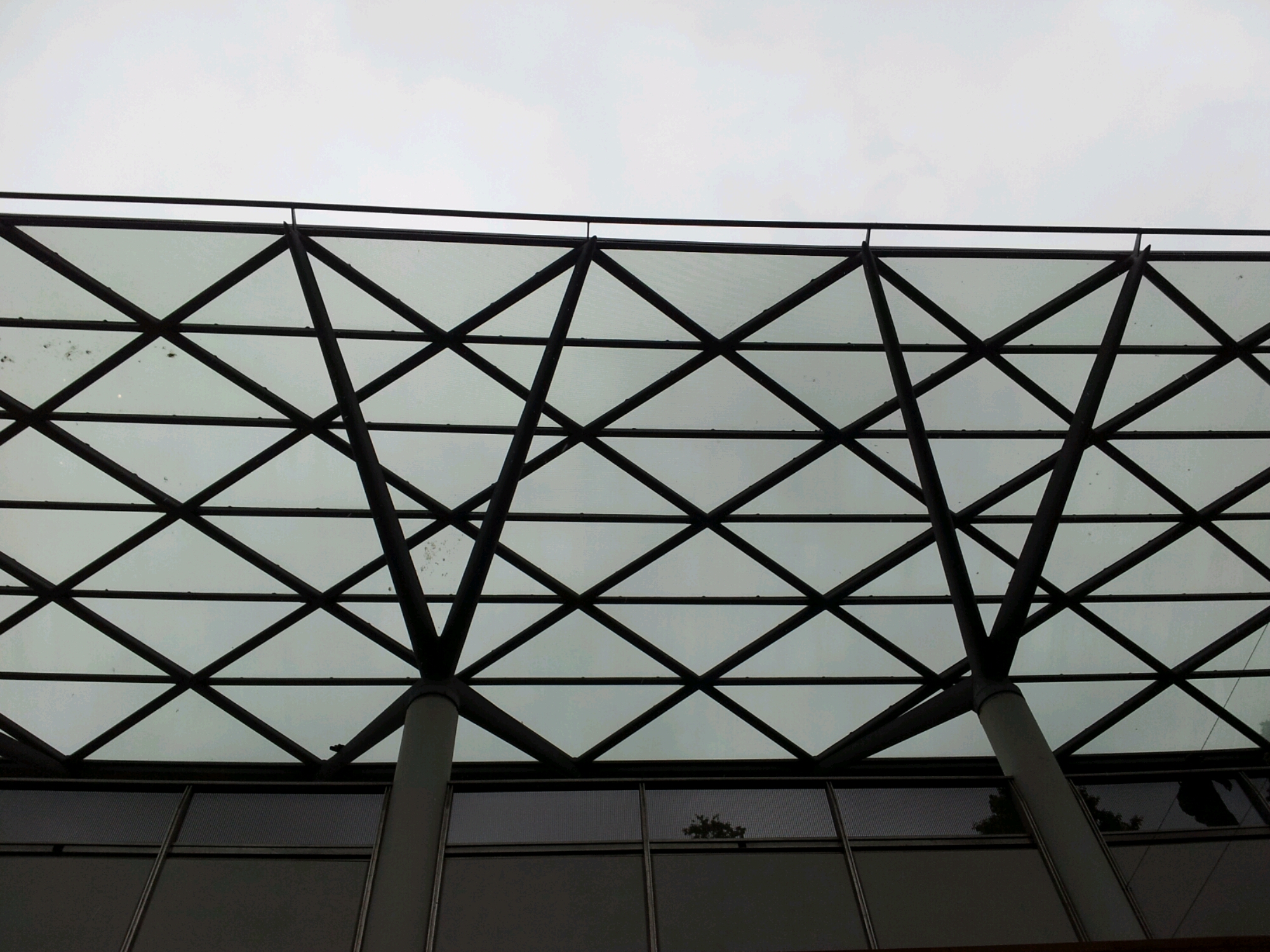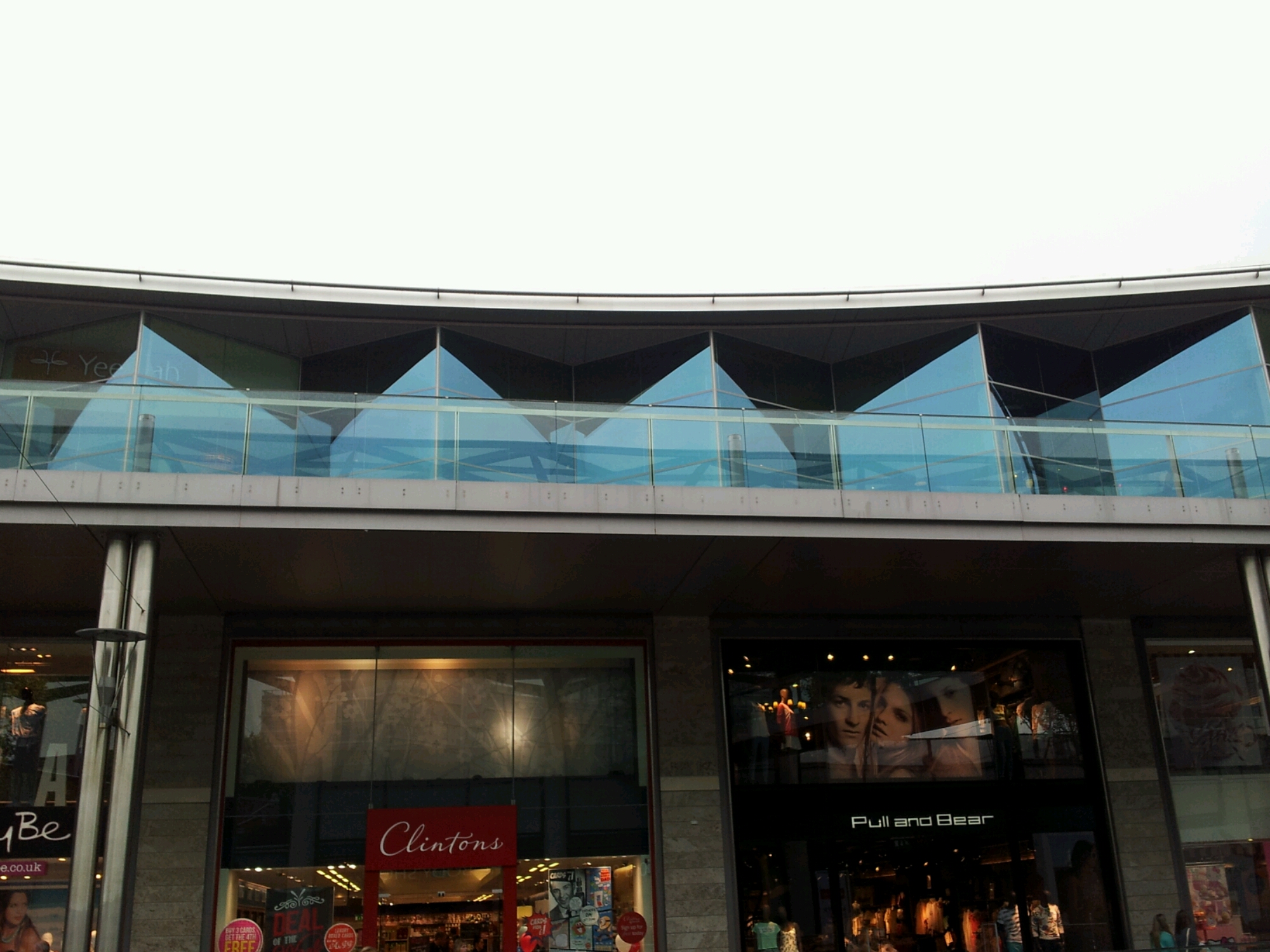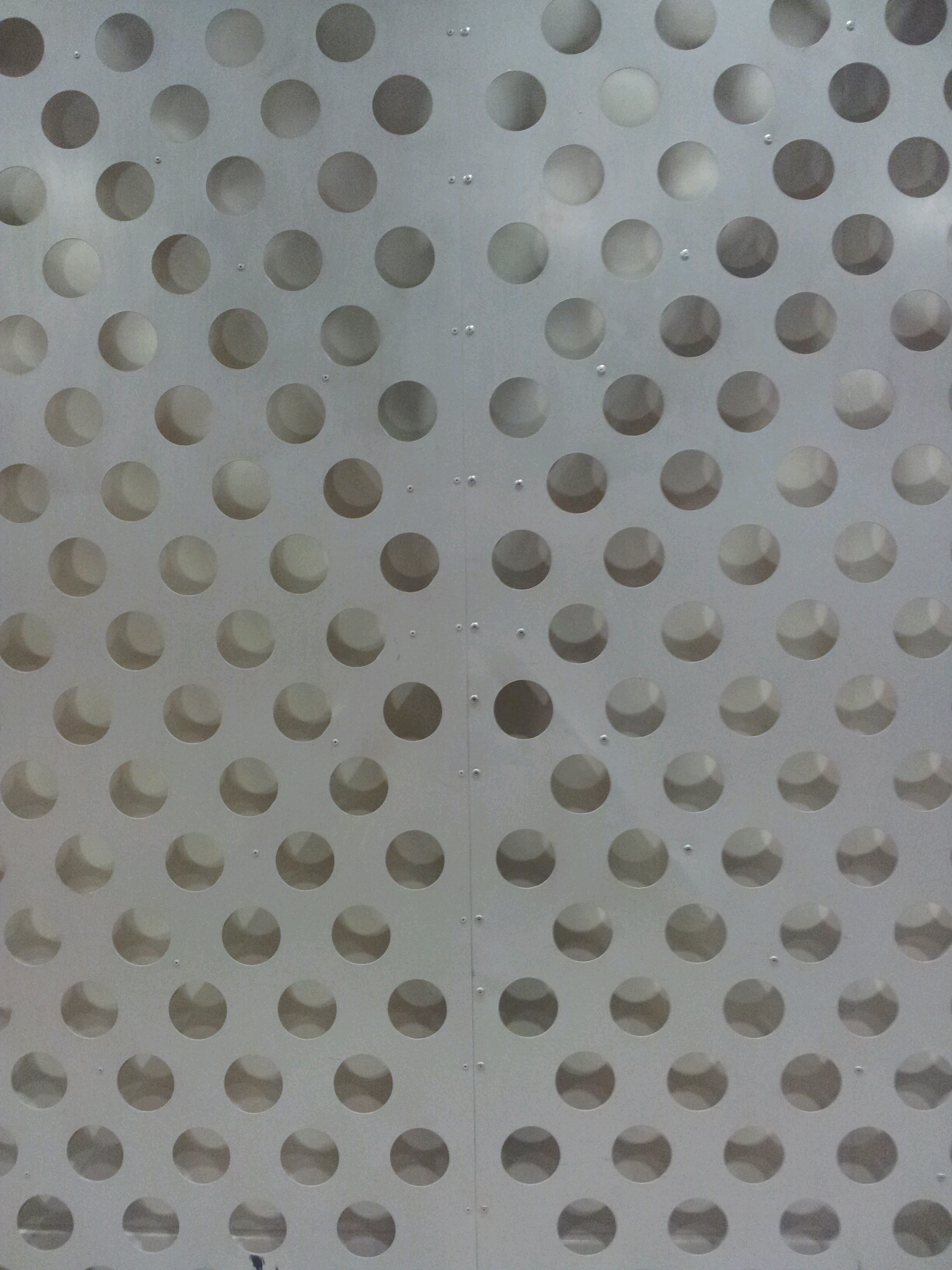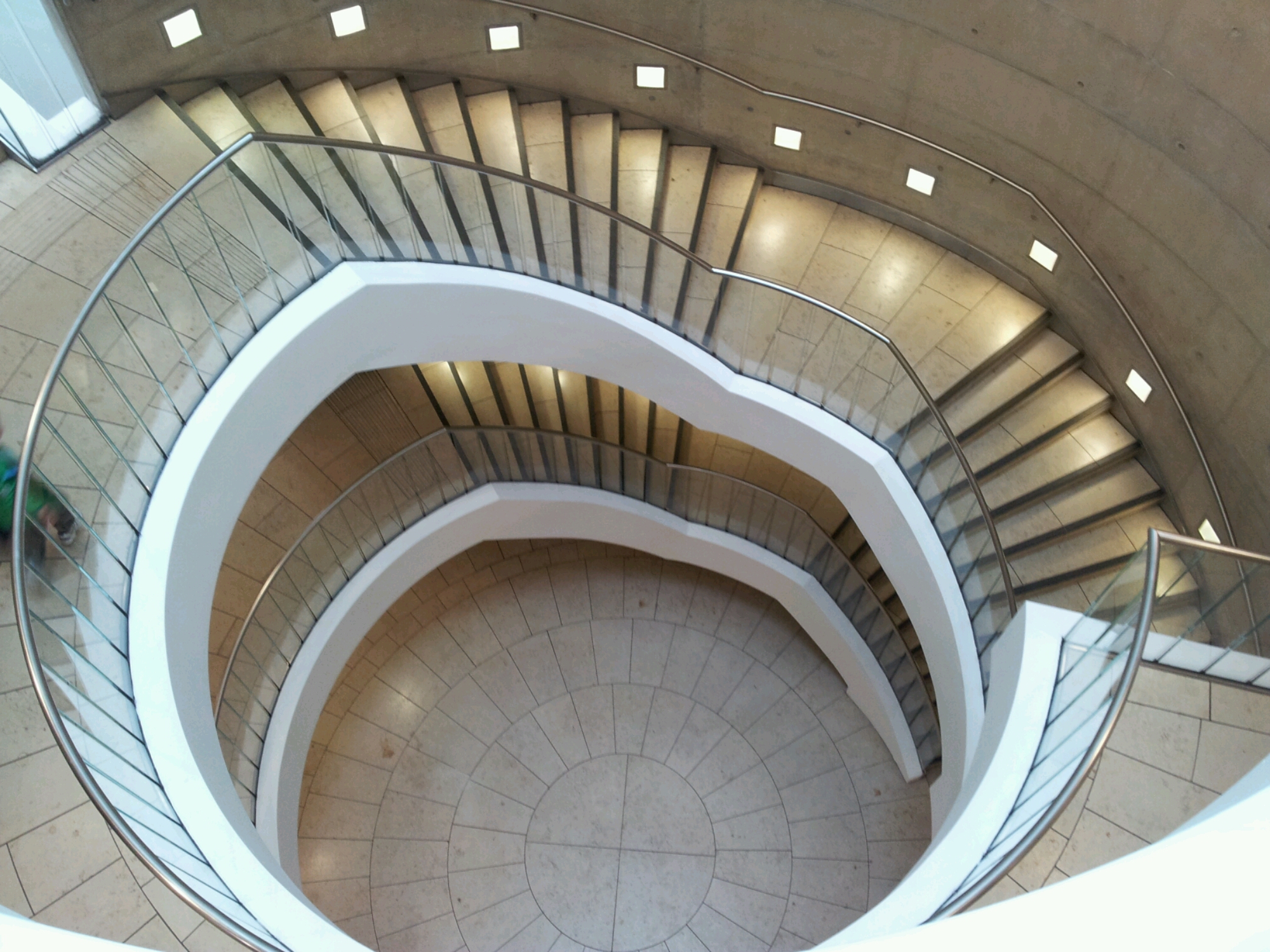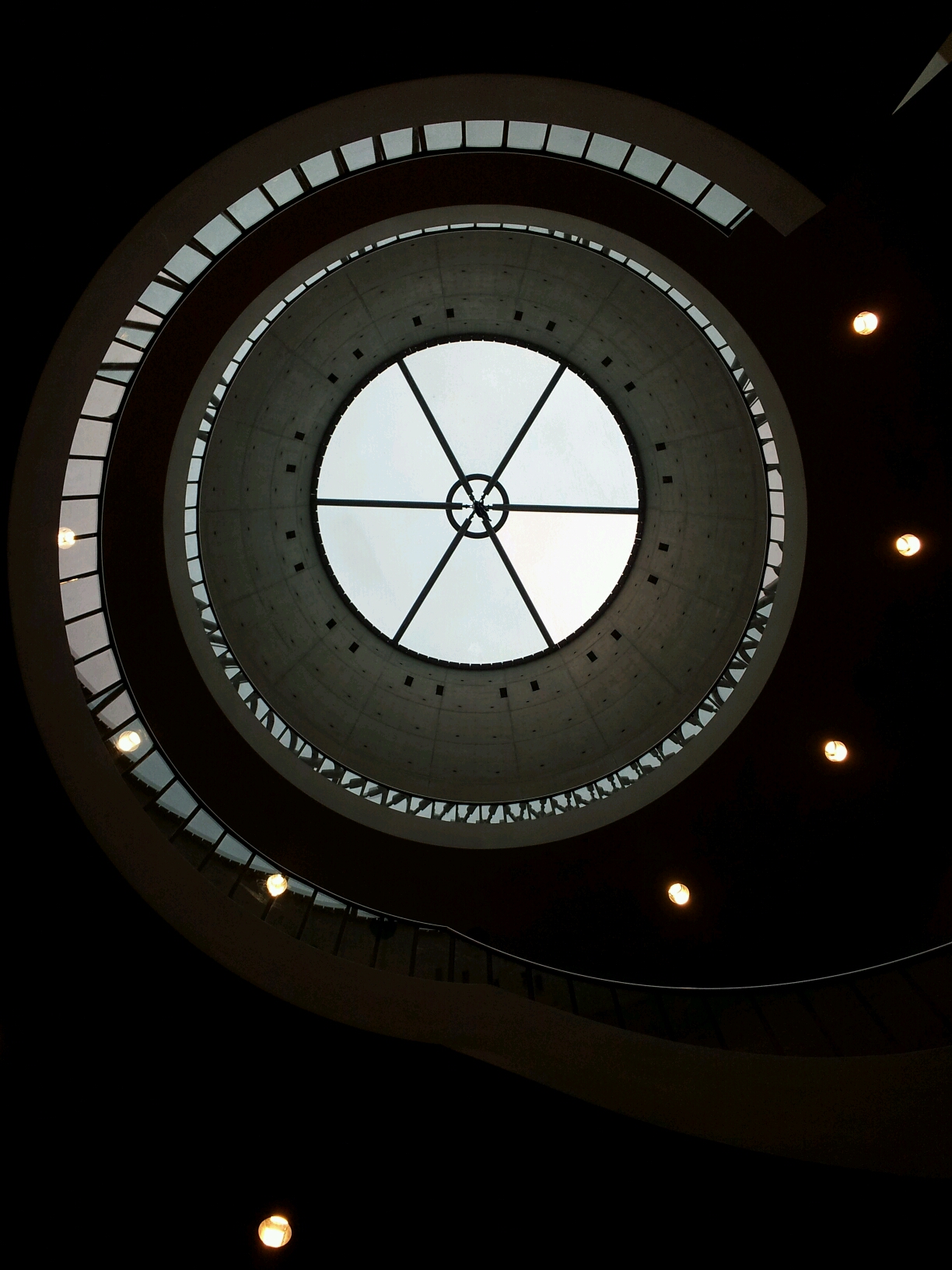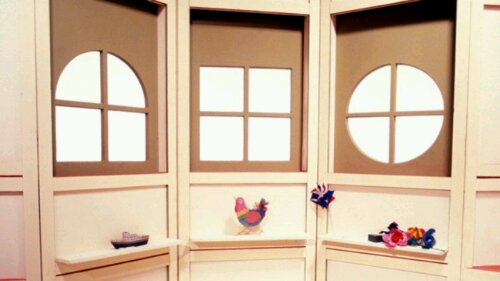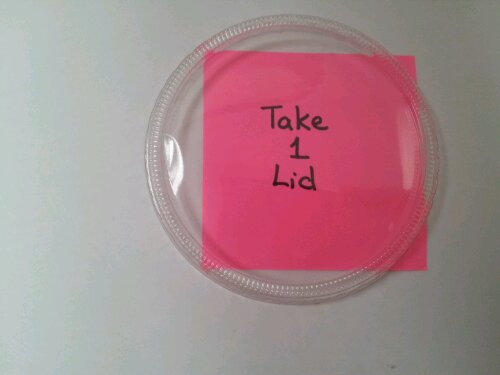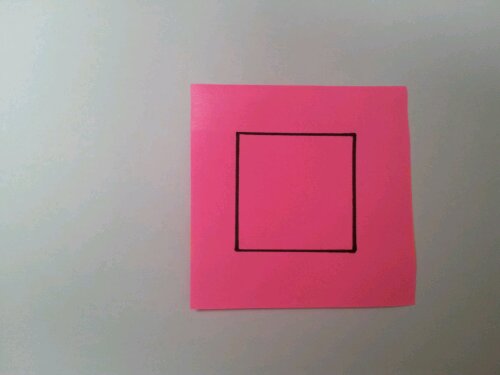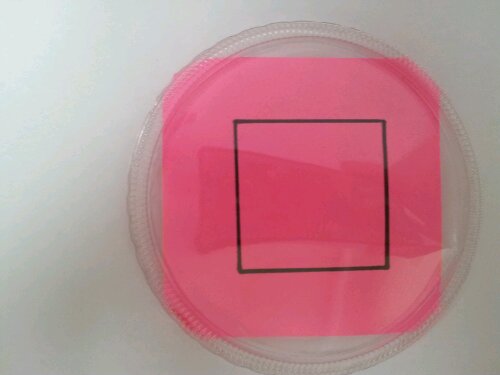You know you are a Maths teacher when you go around a British city seeing shapes and maths everywhere AND you take pictures of it! Here are some discussion starters based around the area of Liverpool ONE:
Curved building
What would the plans and elevations look like? Why do you think the side windows are parallelograms not rectangles? Are the end windows similar shapes? What mathematical word describes distorting a shape? (Skew)
Stacked shapes
What would a plan and elevation of this building look like? What shape is the base of the projected level? (Trapezium)
Sine wave
Is this an approximation of a sine wave? Is it representing a convergent sequence?
Triangular roof
Why are triangles so popular in architecture?
Interesting shopfront projection
What would an aerial view look like? Would you see the zigzag projections?
Security door
What shapes can you see? Is it like isometric or squared dotty paper?
Curved stairwell
What mathematical things can you see? Are the handrails parallel?
Circular skylight
What features of a circle can you see?

